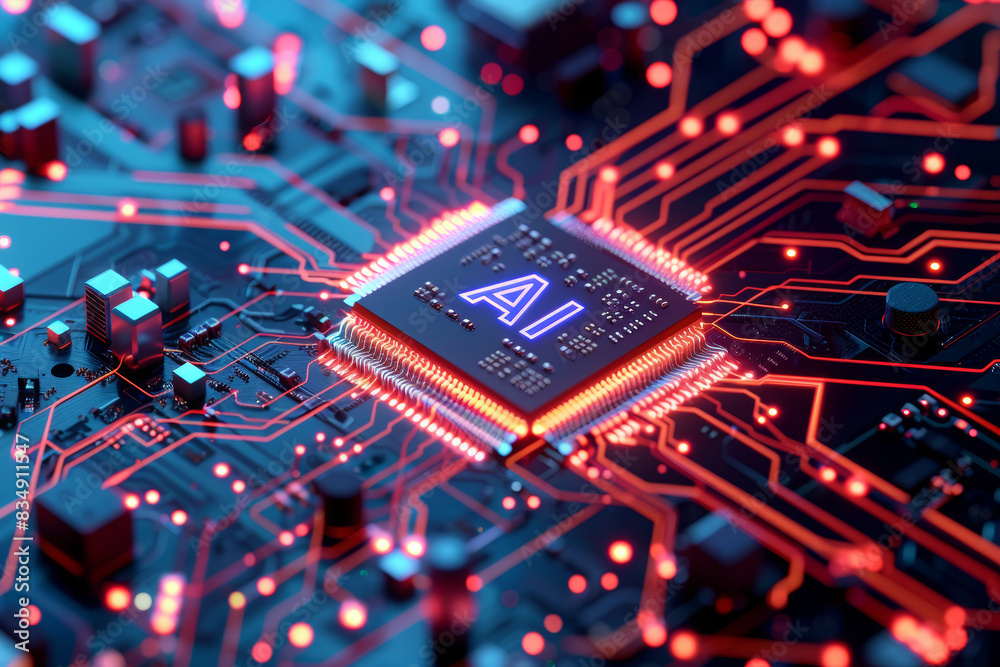The rapid rise of generative AI (Gen AI) business applications over the past two years has been exciting. Forty percent of MBA and Master in Management students say they’re already using Gen AI “multiple times a day,” indicating a rising level of comfort with this technology among the next generation of managers. Meanwhile, 85% of workers agree that AI will affect their jobs within three years, but the question of “how” is a meaningful one.
For Gen AI investments to deliver improvements that benefit organizations and employees, leaders first need to address a potential hurdle: cognitive overload that could make it difficult for employees to get the most value from working with new Gen AI solutions. We live in an era of worker stress and high levels of burn out. The average worker jumps from technology to technology, navigating an army of apps and a host of open tabs, switching between 35 job-critical applications more than 1,100 times every day.
Even humans with the best technological support available still have organic limits to their attention, concentration, and patience–and pushing past these limits leads to stress and burnout. Multitasking, for example, is impossible for nearly everyone and what looks like multitasking is just task-switching that drives errors and poor-quality work.
In this technology-saturated environment, can an emerging technology like Gen AI do some good? Absolutely, if managers have a clear understanding how to use Gen AI effectively. The use cases need to fix problems with work, not create them, and organizations must then accelerate their soft skills journey to account for the technology’s impact.
Gen AI Strategies that Center on People’s Needs
To be successful, Gen AI has to address the relentless need for task-switching, a central challenge of modern work. It’s not your imagination, by data-driven measures, work has gotten harder in the most recent decades. Researchers who study this trend have identified three central challenges: doing too much work in too little time, coping with emotional overload, and overcoming delays caused by task dependencies. Excitingly, Gen AI can help with all three.
On the most basic level, Gen AI can help reduce tasks per hour by automating repetitive tasks, proceeding faster and with fewer errors than when a human is handling the task data. When a whole series of these tasks is automated, employees have time to turn their attention to more complex and challenging projects, rather than racing to keep up with an onslaught of time-sensitive tasks. For example, self-checkout technology allows cashiers to answer customers’ questions and help them when they need assistance, without slowing down the checkout process for others and without the need for that employee to spend an entire shift repetitively scanning barcodes.
For roles that involve a high level of emotional engagement, AI can alleviate situations before they become uncomfortably and unproductively stressful. For instance, AI systems that analyze call center conversations in real-time can detect when a customer service representative or a customer is beginning to feel distressed. The system can then recommend the next best actions to de-escalate and to solve the customer’s issue more seamlessly, which can reduce the overall emotional load of customer service interactions. That can help improve employee retention in call centers and other public-facing roles.
Finally, AI can orchestrate more complex processes that depend on input from multiple employees or departments, to help them run more smoothly. For example, an AI model that helps coordinate medical coding, billing, and reimbursement could help healthcare organizations receive payments faster while reducing the number of steps their employees need to take.
In each of these instances, the use of Gen AI has made human work less intense–heightening productivity and employee experience alike.
Gen AI and Rising Demand for Employees with Soft Skills
More widespread use of Gen AI doesn’t just make work less intense for humans, it also challenges them to be more human. AI-assisted employees will have more time to work on the things that AI cannot do, like communicating clearly and in emotionally intelligent ways with customers, colleagues, leaders, and other stakeholders.
This could accelerate the trend of rising demand for soft skills like communication, empathy, rapport-building, problem solving, and teamwork. Employees and managers already view soft skills as critical to getting hired, and more than one-third of junior employees say they want to learn or improve their skills in the areas of critical thinking, time management, relationship building, leadership, and more. To meet the need for these soft skills in a changing world of work, employers need to hire, train, and promote employees based on their soft skills.
A New Way to Create Value
Rather than using AI as another way to accelerate the pace of knowledge work and ramp up demands for counterproductive multitasking, organizations can use AI as a lever to give employees time to use their soft skills. With AI orchestrating basic technology-driven activities, we can make time for creativity, expressions of empathy, communication, problem solving, and other interpersonal skills to provide human-centered value that’s qualitatively different from and complementary to the gains delivered by technology.
Neil Shastri is a Senior Director in Capgemini Invent’s Workforce & Organization Practice and leads Workforce Transformation for North America. Neil has worked across the globe with both public and private sector clients helping them drive business outcomes through people related initiatives; translation of strategy into pragmatic, actionable program plans/ activities; and creating solutions that deliver an enhanced employee/manager experience through digital channels and analytics.

